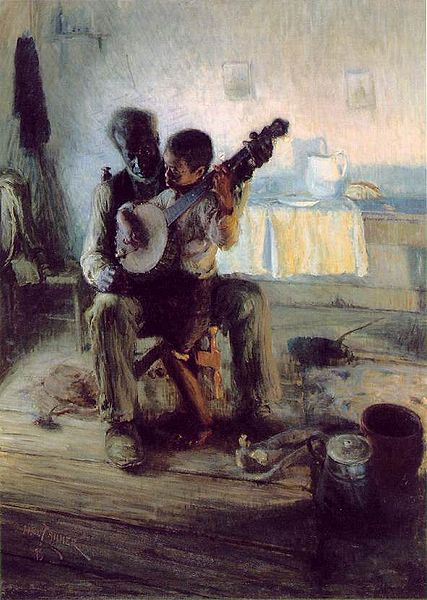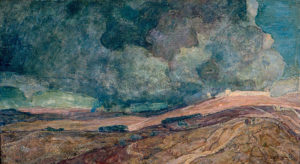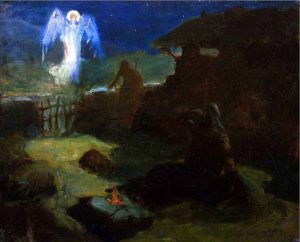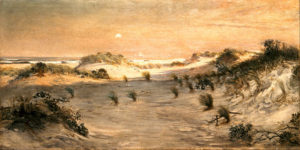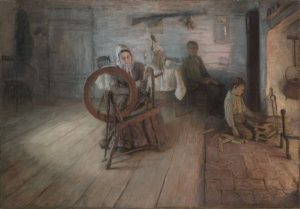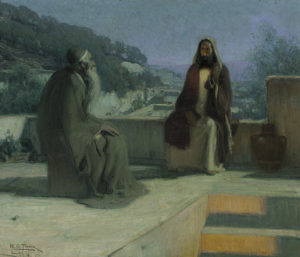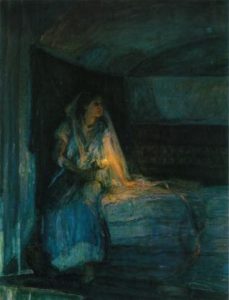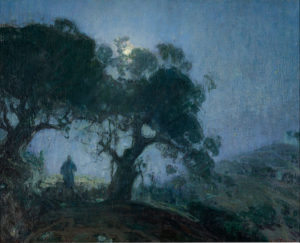Henry Ossawa Tanner was born on June 21, 1859 in Pittsburgh, Pennsylvania. He was the first African-American artist to be recognized worldwide. He studied in Paris for a time, but eventually he came back to the United States and went to school at the Pennsylvania Academy of the Fine Arts. Unfortunately, despite all he had to give to the world, he struggled with the issues of racism. He once said, “I was extremely timid and to be made to feel that I was not wanted, although in a place where I had every right to be, even months afterwards caused me sometimes weeks of pain. Every time any one of these disagreeable incidents came into my mind, my heart sank, and I was anew tortured by the thought of what I had endured, almost as much as the incident itself.”^1 He ended up spending most of his life in France, where he was better accepted.
The featured painting, The Banjo Lesson, is Tanner’s most famous. It depicts two people doing what African-Americans were stereotyped to do–make music and entertain, but Tanner made the larger focus to be the emotion and human interaction, drawing the humanity of the music to the forefront. There is spirit and soul in this piece.
Below are shown Destruction of Sodom and Gomorrah, The Annunciation to the Shepherds,
Sand Dunes at Sunset, Spinning by Firelight: The Boyhood of George Washington Gray,
Nicodemus and Jesus on the Rooftop, Mary,
and The Good Shepherd.
^1 Bruce, Marcus C. Henry Ossawa Tanner. New York: The Crossroad Publishing Company, 2002.
